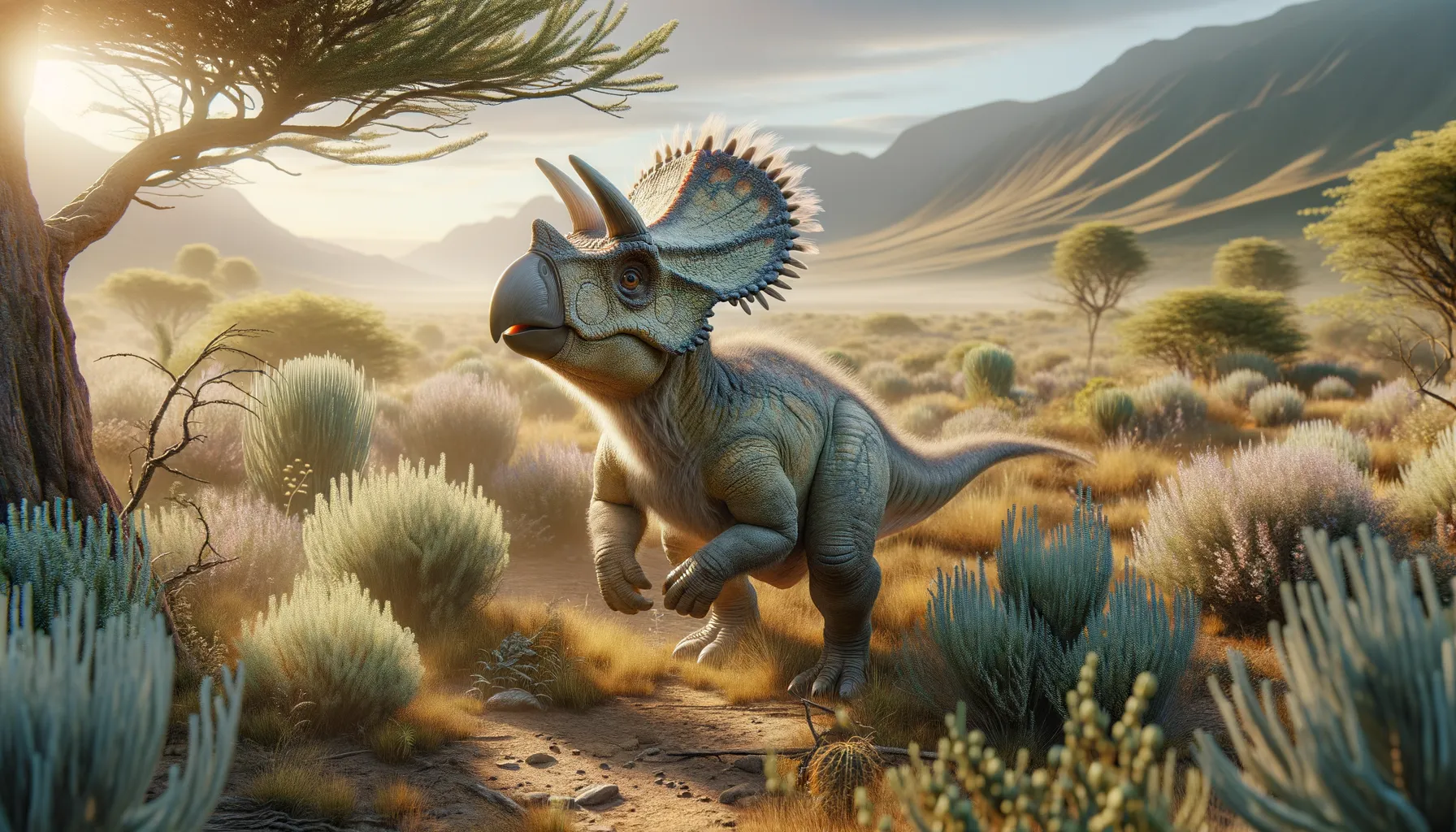
Gobiceratops
Small size, big history from Mongolia.
Period
Cretaceous
Length
Approximately 1 meter in length.
Height
Stood about 0.3 meters tall.
Weight
Estimated at around 20 kilograms.
Gobiceratops is a small ceratopsian dinosaur known for its parrot-like beak and a domed skull which suggests it might have been an early relative of the more well-known Triceratops. It lived during the Late Cretaceous period in what is now Mongolia. As a herbivore, it primarily fed on plants and had a relatively simple body structure suited for foraging low-growing vegetation.
Diet
Gobiceratops was herbivorous, feeding mainly on low-lying plants. Its beak-like mouth helped in cropping vegetation. It likely consumed leaves, ferns, and other soft plant materials available in its habitat.
Hunting
As a herbivore, Gobiceratops did not hunt but spent much of its time foraging for suitable plant matter. Its small size allowed it to navigate dense undergrowth where it found food.
Environmental challenges
Gobiceratops lived in a relatively dry environment, where finding enough vegetation could have been challenging. It had to compete with other herbivores for resources. Seasonal changes and fluctuations in vegetation availability likely influenced its survival.
Speed
Gobiceratops was likely slow-moving due to its size.
Lifespan
Estimated around 10 to 20 years in the wild.
First discovery
Discovered in Mongolia during the 1970s.
Fun Facts
- Gobiceratops was a small ceratopsian dinosaur that lived around 80 million years ago during the Late Cretaceous period.
- This dinosaur was discovered in the rocks of the Gobi Desert, which is why it has the name 'Gobi' in its title.
- Despite being part of the ceratopsian family, Gobiceratops didn't have the distinct frills and horns typically associated with the group.
- Gobiceratops likely measured less than a meter in length, making it one of the smaller members of its dinosaur family.
- It was a herbivore, meaning Gobiceratops fed on plants and vegetation growing in its desert habitat.
- The discovery of Gobiceratops fossils has helped scientists better understand the evolution and diversity of ceratopsian dinosaurs.
Growth and Development
Gobiceratops grew from small hatchlings into adults over several years, with characteristic domed skulls developing early on. Growth rates might have depended heavily on environmental conditions and availability of dietary resources. Juveniles likely stayed close to adults for protection.
Habitat
Gobiceratops lived in semi-arid regions with limited water sources. Its habitat was sparse, dominated by limited plant life, including ferns and cycads. The area was likely home to other dinosaur species, both herbivores, and predators, leading to a dynamic ecological environment.
Interaction with other species
It coexisted with other small herbivorous and some predatory dinosaurs. Gobiceratops might have lived in small groups for protection against predators. Its small size made it easy prey for larger carnivores, necessitating a degree of vigilance from the herd.
Natural lifespan
Gobiceratops had a lifespan of approximately 10 to 20 years.
Reproduction
Gobiceratops likely laid eggs in nests, similar to other dinosaurs of its size and era. Parental care may have been present, with adults protecting nests from predators and environmental hazards. The hatchlings would grow and mature quickly to avoid predation.
Social behaviour
Gobiceratops may have lived in small herds, relying on group behavior for defense. Social interactions likely involved foraging and protecting young from threats. These herds may have had a hierarchy, allowing for structured foraging routines.
Fossil locations
Fossils of Gobiceratops have been predominantly found in Mongolia. The specific region, known as the Gobi Desert, is rich in dinosaur fossils. These discoveries provide valuable insight into the diversity of life during the Late Cretaceous in Central Asia.
